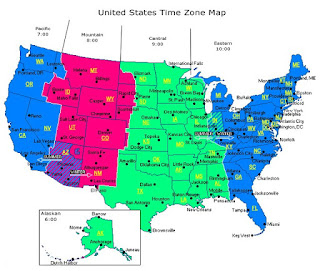 Sometimes I get off-beat press releases, and highlight them on my “Stop-the-PResses” blog. This extremely off-topic release, though, was so appropriate (given the perennially messy state of my office) that it seemed worth sharing. While there’s no dirty laundry in here, I do have plenty of old coffee cups.
Sometimes I get off-beat press releases, and highlight them on my “Stop-the-PResses” blog. This extremely off-topic release, though, was so appropriate (given the perennially messy state of my office) that it seemed worth sharing. While there’s no dirty laundry in here, I do have plenty of old coffee cups.
DORM ROOM SURVIVAL GUIDE 101
CONQUER FRESHMAN FEARS OF CLEANING WITH HELPFUL HINTS FROM “THE ACCIDENTAL HOUSEWIFE” – JULIE EDELMAN
(New York, NY) If you thought sending your child off to kindergarten was hard, wait until they leave for college! With summer coming to an all too quick end, it’s time to pack up, stock up and prepare your high school graduate for their freshman year of college and life without their favorite maid-MOM!!! And when it comes to cleaning, cooking and laundry your kiddies probably won’t think much about it but when laundry takes over their room, dust bunnies rule their roost, they can’t get to the bathroom because their stuff is everywhere and they’ve got odors that just won’t quit . . . well that’s where some good enough survival tips are a required course. Luckily, TV Personality, New York Times best-selling author and Home & Lifestyle Expert – JULIE EDELMAN, aka “THE ACCIDENTAL HOUSEWIFE,” is always here to help!
Below she shares some bi-weekly quick, cheap and easy hints & tips that will keep health inspectors away without calling in your mom; your undies ‘n tees clean enough; and your favorite electronics in gear!
IF YOU DO NOTHING ELSE: Toxic Zones: Throne Room and Chow Space
A lot of the new college dorm rooms come in suites, so not only are you responsible for cleaning your bedroom, you have a bathroom, kitchen and common area to worry about. Don’t fret – break up the cleaning into two zones so you can better judge if it should be cleaned pronto or you can leave it for when the mood hits and head to the quad with friends.
Toxic Zones: Bathroom and kitchen, since these areas have the most chance of nasty smells, bacteria and build up from old cafeteria food or your roommates toe clippings
– Clean weekly
– Organize monthly
Not So Toxic Zones: Bedroom and common areas, that attract less things that multiply and usually don’t start smelling unless your roommate leaves a week old pizza under the couch!
– Clean every one to two weeks
– Organize monthly
IF YOU DO NOTHING ELSE: Non Toxic Zones: The Sleep and Study Sanctuary
If they never cleaned their room after 18 years at home, they probably won’t start now. Here are some ways to prevent mess, so the busy student can avoid cleaning:
1. Use mats and go shoeless to limit the amount of dirt and dust your friends track in from their messy room down the hall
2. Close windows – to keep outside dirt and dust from entering
3. Purchase lots of bins and organizers – so you can throw you books, school supplies, etc. that way not to be left aimlessly on the floor or your desk
Don’t let those bed bug bite – remember to wash and change your sheets and pillow cases every two weeks!
The Microwave: A Dormer’s Best Friend
And pop goes the microwave – popcorn explodes, reheated sauces bubble over and your ramen noodle dinner spills. Avoid these messes by:
1. Layer it – put ten to twenty sheets of paper towels on the bottom, so if anything spills all you have to do is remove a sheet or two.
2. Cover it – unless otherwise directed, cover all foods with microwave-safe tops
If you happened to pull an all nighter and forget to cover or layer, grab a lemon from the cafeteria, cut it in half and squeeze the lemon into a bowl of water. Zap the bowl of lemon water for five minutes. Once cooled remove the bowl and wipe down any remaining yuck with paper towel.
Laundry 101
Heading to the laundry room in the basement of the dorms can be a scary thing but these basic tips will have you doing laundry like the fluff and fold down the street…
1. Sorting
– Divide and conquer – separate your whites, darks, lights and towels
– Empty all pockets – make sure to take out loose change, student I.D., gum and iPod
*** If you accidently wash your cell phone or iPod take out the battery, blow dry and then place both in a bowl of uncooked rice for 3 days—no problemo if you leave it longer unless you’re hungry and want to nuke it to go with some Chinese Take Out!!!
2. Washing
– Never mix – wash sorted loads separately
– Green Enough: Make sure to set dials to the appropriate water temperatures
o Whites: hot or warm
o Lights and darks: warm or cool
o Delicates: cold
3. Drying
– Don’t Overload – though it may be tempting to stuff the dryer to the rim to save money, if you exceed the limit clothes won’t dry
Z Trek Copyright (c) Alan Zeichick
 The U.S. Federal Trade Commission had made my day. In their release entitled, New Rule Prohibiting Unwanted “Robocalls” to Take Effect on September 1, we learn:
The U.S. Federal Trade Commission had made my day. In their release entitled, New Rule Prohibiting Unwanted “Robocalls” to Take Effect on September 1, we learn:















